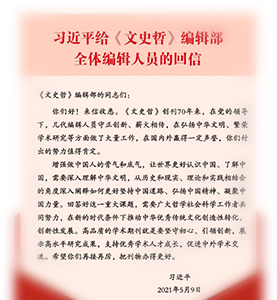唐代以前关于李陵的认识和评价,主要经历了三次大的发展和演变。汉昭帝始元六年苏武归国,引发了西汉王朝对李陵案的重新审查和讨论,为经学时代班固书写李陵确立了方向,奠定了基础。建安时期文姬归汉,引发了魏晋士人对李陵的重新关注和反思,«李陵集»、«李陵别传»的整理编撰,是时人重新认识和解读李陵的历史产物。五胡乱华以后,李陵接受进入新的历史阶段:刘琨等文化精英肯定李陵,突破了此前同情为主、批判为辅的评价模式;拓跋鲜卑等北方民族追祖李陵,凸显了李陵在胡汉融合过程中的象征意义;江淹等南北朝文士拟引李陵,使其形象完成了由“武士”到“文士”的转型,李陵的文学史地位也因此确立。传世李陵之作,真伪难辨,唐代以前多信其真,宋代以后多疑其伪,全面否定或肯定,均非的论。
A Study ofthe Acceptance History of Li Ling before the Tang Dynasty:
With the Discussion of the Spread and Authenticity of Li’s Works
Ding Hongwu
The understanding and evaluation of Li Ling mainly experienced three times of development and evolution before the Tang Dynasty. In 81 B.C., Su Wu’s return caused a new round of inspection and discussion of Li Ling’s case in the Han Dynasty, which set the tone of Ban Gu’s narration of Li Ling. Hereafter, Cai Wenji returning to the Han Dynasty draw renewed concern and reflection of Li Ling among scholars, and the collation of The Collection of Li Ling as well as the compilation of “A Supplementary Biography of Li Ling” were the products of new understanding and interpretation of Li at that time. After the socalled “Uprising of the Five Barbarians”, the acceptance of Li Ling entered a new stage: the cultural elites such as Liu Kun made affirmation of Li Ling, and broke the former evaluation model of sympathy supplemented by criticism; the northern minorities such as Xianbei yearned Li as their ancestor, and highlighted Li’s symbolic significance in the fusion process among the Han nationality and nonHan nationalities; literati of the Southern and Northern Dynasties such as Jiang Yan showed admiration to Li Ling, and completed the transformation of Li’s image from “warrior” to “scholar”, and Li’s status in the history of literature was thus established. It is difficult to distinguish whether Li’s handeddown works were authentic or counterfeit. Those works which were mostly considered as being authentic before the Tang Dynasty, aroused suspicion since the Song Dynasty. However, neither complete negation or complete affirmation can be correct judgment.


